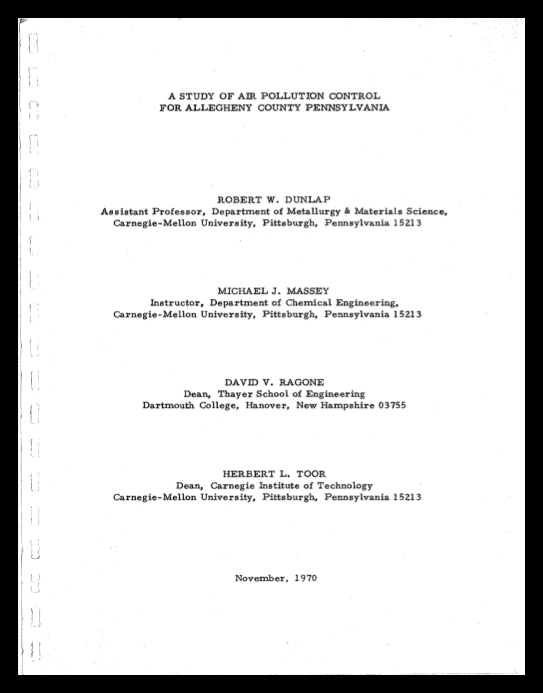Air Pollution
Air pollution continues to be a pervasive issue around the country, and especially so here in Allegheny County. This month's feature highlights past projects whose focus has been on air pollution, its effects, and how we can work to achieve clean air for all.
The first EPP Projects course focused on air pollution in the greater Pittsburgh region, contributions from steelmaking operations and automobiles, and the potential for meeting new air pollution regulations. Led by Robert Dunlap, Michael Massey, David Ragone, Herbert Toor and a team of 18 students, the 1970 project examined emissions and resulting air quality, and the relationships between these and the air quality standards. They also considered the various technology options for meeting proposed emission standards including cost. The results of the work identified where the current state standards could be met and, more importantly, where they could not be.

Since then, a dozen more projects have focused on air pollution issues, especially in and around the Pittsburgh region. The Spring 1971 project examined a potential alert warning system for air pollution incidents building on the work of this first project. Spring 1979 brought a focus on non-traditional particulate sources and measurement problems. The Spring 2006 project investigated air toxics and environmental justice – whether poor, elderly, and minority populations in Allegheny County were at greater risk of lower air quality (results: yes for poor populations). A Fall 2015 project considered how individuals could more closely monitor their indoor air quality (and share information through an online system) using the Speck sensor. Other projects involved vehicle emissions issues – hybrids and diesels (Spring 2005), and vehicle inspection policies and air quality (Spring 1995, Spring 2017).